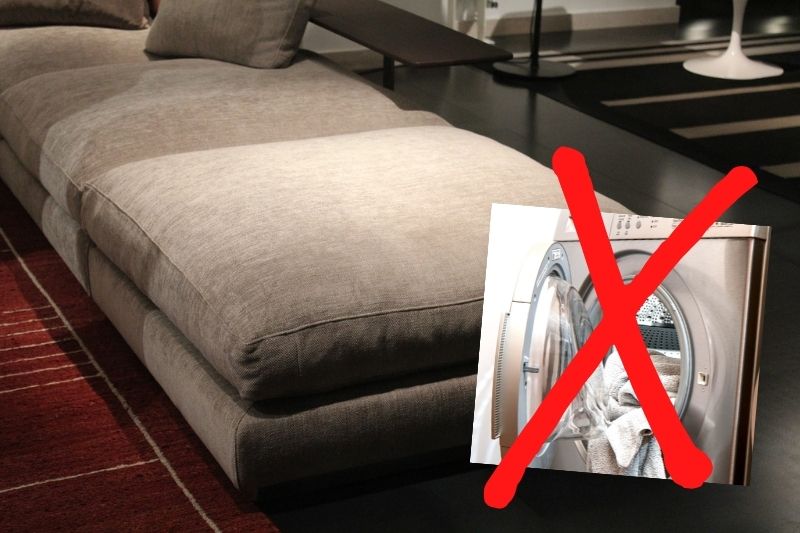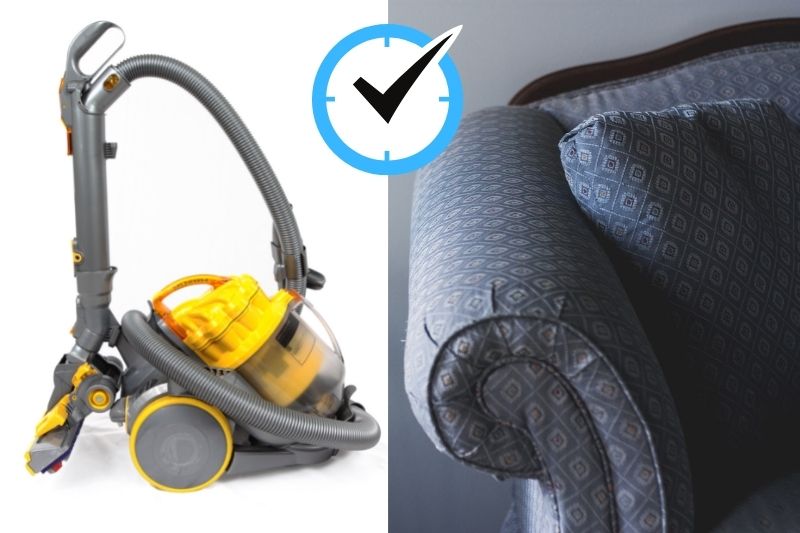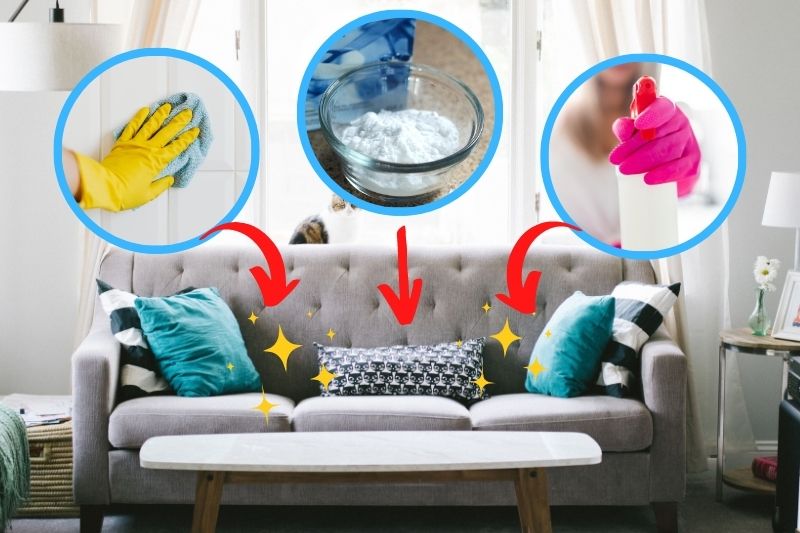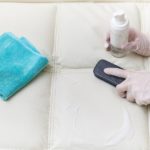The humble sofa is at the centre of every household’s living space. They’re the ideal place to snuggle down with loved ones, watch a movie, and enjoy a few snacks and each other’s company.
All that use, however, can lead to your sofa looking less than fresh. If you’ve found yourself in the position where your sofa covers could really do with a bit of TLC, this guide is for you.
Stay Away from the Washing Machine

Before getting carried away, stripping the covers off your sofa and throwing them in the wash, you need to know that most modern fabric sofa covers are not designed to be machine washed or completely soaked in water in any way.
Modern fabric sofas are required to have a flame retardant coating, and thoroughly washing a sofa cover can start to strip this away. It’s better to be safe than sorry, but if you aren’t sure, all your sofa’s manufacturer for guidance.
On top of the safety concerns, washing fabric covers in the washing machine can also cause the dyes to seep out, and the fabric to shrink.
Modern sofa covers are designed to be spot cleaned, not machine washed. That’s why you were probably offered a sofa care kit when you purchased the suite!
Check the Care Label
If you are planning to clean your sofa covers yourself, make sure that you check the care label. On a sofa or armchair, this is commonly found on the underside. If you cannot find the label or are unsure of how to proceed, consult the manufacturer as their materials may have unique requirements.
If you have found the label, you might see a code that will tell you how to clean the fabric. The most common upholstery cleaning codes are:
- “W”: this means you can use water
- “S” or “P”: you can only use solvent-based cleaners, and so these should be dry cleaned
- “SW”: you can use either water or solvent-based cleaners
- “X”: vacuum only, this type of fabric should be professionally cleaned
Prevention Is Better than Cure

When it comes to keeping sofa covers in great condition, prevention is better than a cure. As the sofa is at the centre of family life, it will quickly end up covered in crumbs, dirt, sweet wrappers, pens, and other debris that your loved ones have picked up throughout the day. If you have pets, you’ll find reminders of them in every nook and cranny too.
It is recommended that you hoover your sofa once a week; this will pick up the debris before it becomes a problem or damages the material. Use a brush and a crevice attachment to get into all the corners and underneath the cushions.
You should also clean the sofa in this way before beginning any of the following spot clean methods.
Patch Test
Before getting started, always test any new cleaning method on an inconspicuous area of fabric, such as behind one of your cushions to make sure it will not discolour or damage your fabric before proceeding with the full clean.
Cleaning with Bicarbonate of Soda
Over time, sofas can collect so much dust that they end up dull and start to smell too. Once you’ve cleared up the sweet wrappers and hoovered up the crumbs, you can deal with a smelly sofa cover with the cupboard favourite that is bicarbonate of soda.
Sprinkle the bicarbonate of soda across the sofa’s surfaces. You’ll probably need around 1 to 2 tablespoons per seat. Leave the bicarbonate of soda to sit for at least 20 minutes to get the smells out.
After twenty minutes, hoover up the bicarbonate of soda to reveal deodorised fabric.
Spot Cleaning with Washing Up Liquid
Once you have hoovered up the bicarbonate of soda, you can start to spot clean. You may have cleared some of the stains and marks already, so take another look over the sofa’s surfaces to identify any areas that still need a little love.

You will need:
- Washing up liquid
- Warm water
- Soft bristled brush
- Spoon or spatula
- Clean white cloth
First, mix 1 part washing up liquid with 4 parts warm water. Beat the mixture together until it creates a thick foam.
Using the soft bristled brush, gently rub the affected area with the foam. As you work, you should see the dirt starting to lift from the fabric and into the foam.
Next, you need to remove the dirty foam without pushing it into the fabric. This is where your spoon or spatula comes in.
Once the dirty suds have been removed, grab your clean cloth, dampen it slightly, and wipe away any remaining suds or residue.
Removing Tough Stains
If you still have tough stains remaining after using washing up liquid, it’s time to move onto something stronger. As ever, conduct a patch test to make sure that your sofa will not be discoloured!
You will need:
- Distilled white vinegar
- Cold water
- Microfibre cloth
- Washing up liquid
- Tepid water
First, mix a solution of equal parts water and white vinegar.
Blot the affected area with the solution and leave it to sit. After a few minutes has passed, wipe the stain gently with a clean, dry microfibre cloth.
Mix washing up liquid and tepid water, and wipe over the now clean area. Use as little water as possible; using too much water could result in a stain or cause the fabric to shrink.
Leave the fabric to dry naturally.

Lover of coffee, painting, and all things cute and fluffy. I’m always on the lookout for easier, more gentle ways to tackle awful household chores.






